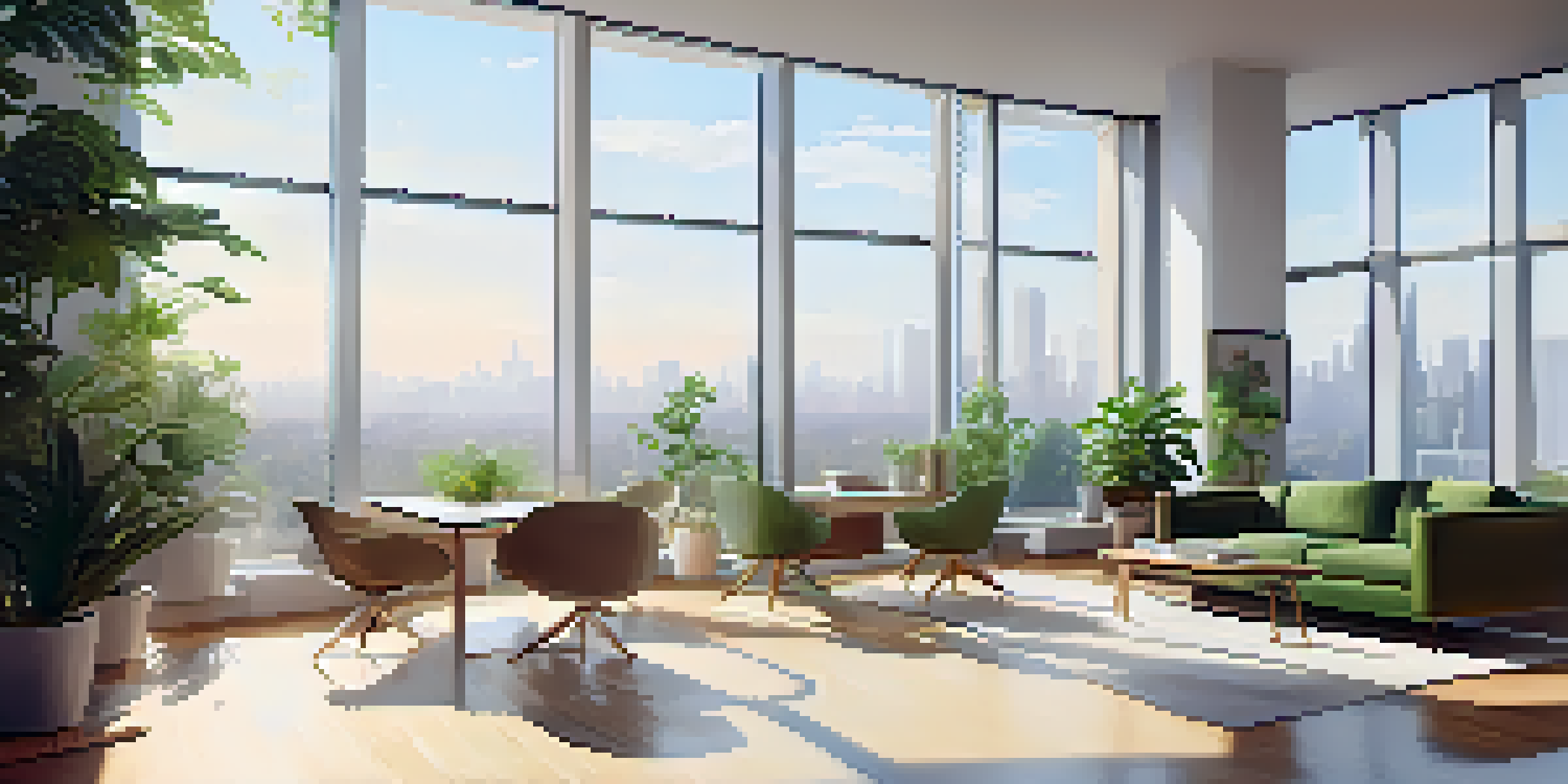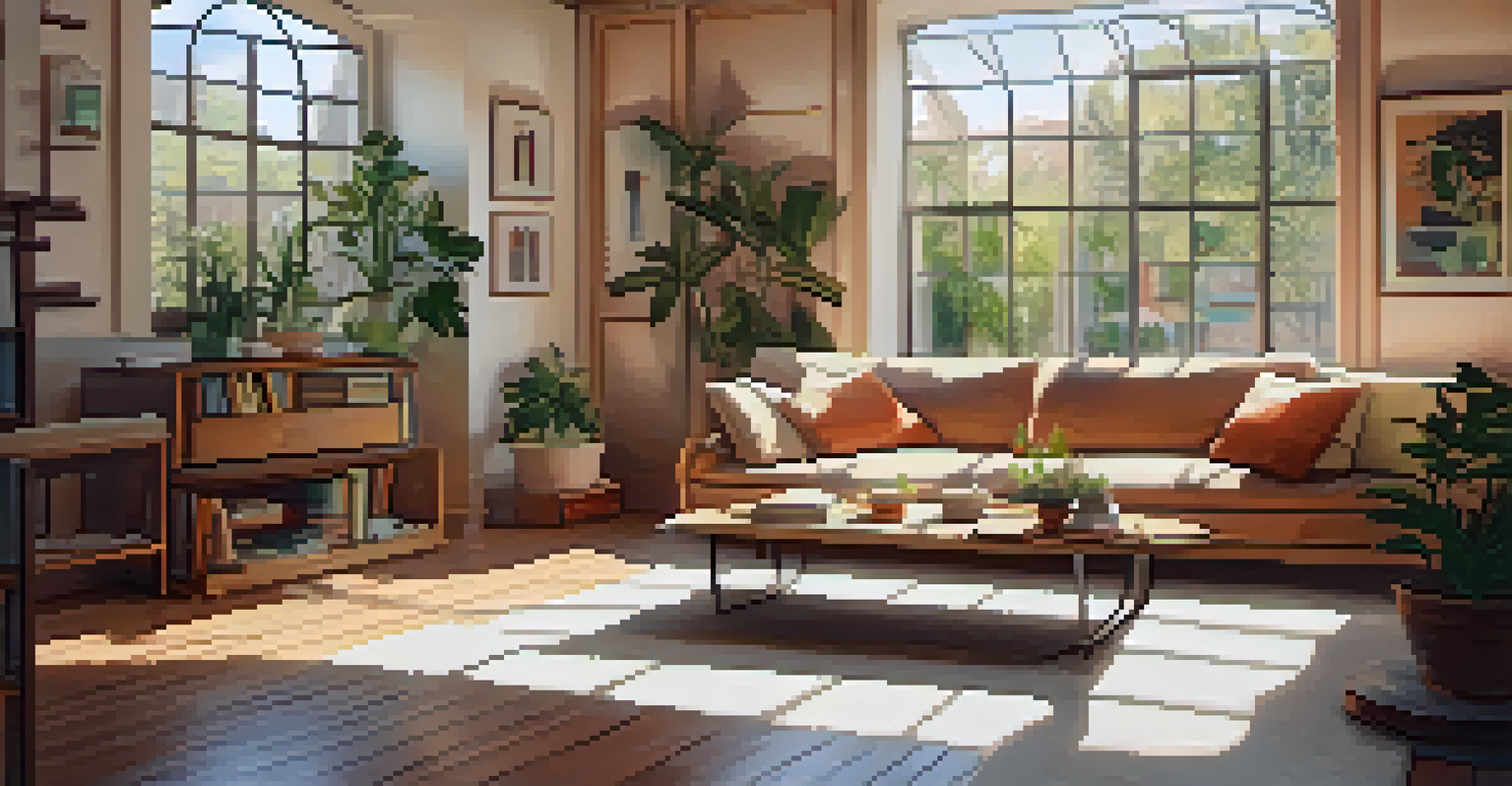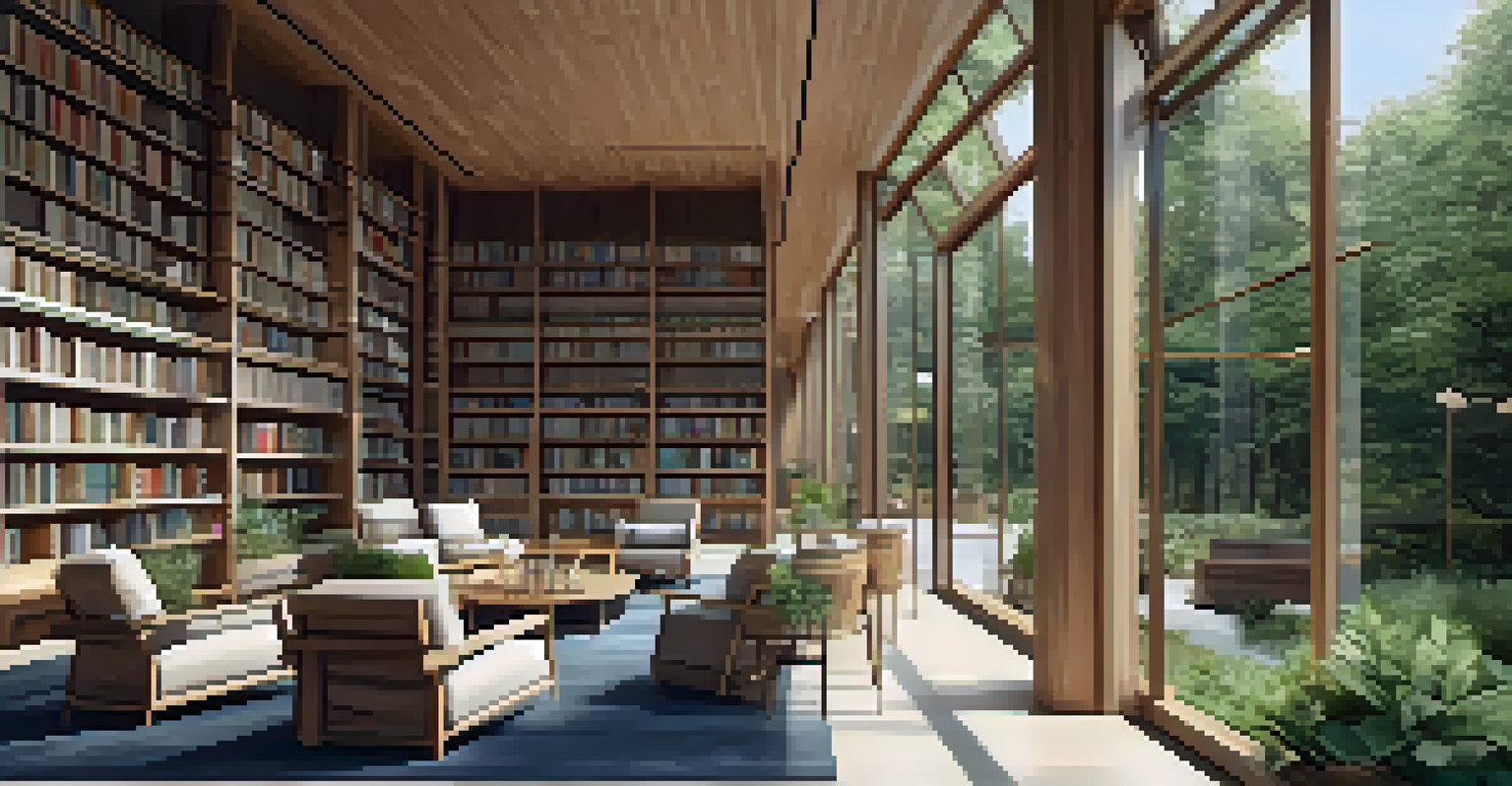Using Natural Light: Enhancing Spaces with Architecture

The Importance of Natural Light in Architecture
Natural light plays a crucial role in architecture, offering both aesthetic and practical benefits. It not only enhances the overall ambiance of a space but also affects our mood and productivity. Imagine walking into a room flooded with sunlight; it instantly feels more inviting and alive.
Architecture should be rooted in the spirit of the place, reflecting the beauty and character of the environment, especially through the use of natural light.
Moreover, incorporating natural light into architectural design can lead to energy savings. By maximizing daylight, buildings can reduce their reliance on artificial lighting, which is both cost-effective and environmentally friendly. This shift towards sustainability is essential in today’s eco-conscious world.
Ultimately, natural light is more than just a design element; it’s a vital component that influences how we interact with our environments. The right amount of light can make a room feel larger, warmer, and more welcoming, bridging the gap between indoor and outdoor spaces.
Design Strategies for Maximizing Natural Light
Architects employ various strategies to harness natural light effectively. One popular method is the use of large windows and glass doors, which can create a seamless flow between the indoors and outdoors. This not only brings in light but also provides stunning views of the surroundings, enhancing the overall experience.

Another effective technique is the installation of skylights, which allow sunlight to pour in from above. This is particularly useful in spaces that might lack sufficient wall space for windows. Skylights can brighten up dark corridors or bathrooms, transforming them into vibrant areas.
Natural Light Enhances Well-Being
Exposure to natural light boosts mood, productivity, and fosters social interaction in various environments.
Additionally, the orientation of a building plays a significant role in light distribution. By positioning structures to face the sun at different times of the day, architects can optimize light exposure. For instance, south-facing windows capture more sunlight in the Northern Hemisphere, making rooms warm and inviting.
The Psychological Benefits of Natural Light
Natural light has a profound impact on our well-being and mental health. Studies have shown that exposure to sunlight can boost mood and reduce feelings of depression. This is largely due to the body’s production of serotonin, a neurotransmitter that regulates mood, which is stimulated by natural light.
The sun is a very important part of architecture. It lights the way we live, and it shapes our experience of space.
Furthermore, natural light can enhance focus and productivity. In workspaces, for instance, employees who are exposed to daylight tend to be more alert and engaged. Imagine a bustling office with bright, sunlit areas—it's likely to foster collaboration and creativity among team members.
On a broader scale, incorporating natural light into public spaces can cultivate a sense of community. Parks, libraries, and community centers designed with ample light can become hubs for social interaction and well-being, ultimately enriching the lives of those who use them.
Natural Light and Energy Efficiency
The integration of natural light in architectural design significantly contributes to energy efficiency. By utilizing daylighting strategies, buildings can reduce their dependence on artificial lighting, leading to lower energy consumption. This not only cuts costs but also lessens the environmental footprint.
For example, many modern buildings are designed with energy-efficient glazing that maximizes light while minimizing heat loss. This means that spaces can remain well-lit and comfortable without relying heavily on heating or cooling systems. It's a win-win for both the occupants and the planet!
Energy Efficiency Through Daylight
Maximizing natural light reduces reliance on artificial lighting, leading to cost savings and a smaller environmental footprint.
Moreover, energy-efficient buildings often benefit from government incentives, making it financially advantageous for developers and homeowners. By investing in natural light solutions, we can create spaces that are not just beautiful, but also sustainable and economical in the long run.
Case Studies: Successful Use of Natural Light
Several notable architectural projects exemplify the successful use of natural light. One such example is the The Crystal Bridges Museum of American Art in Arkansas, designed by Moshe Safdie. Its extensive use of glass not only showcases the surrounding landscape but also allows natural light to illuminate the artwork beautifully.
Another inspiring example is the Apple Park in California, which features an enormous circular building with vast glass walls. This design lets in ample natural light, creating a productive and harmonious workspace for employees. The building’s connection to nature is evident, enhancing creativity and well-being.
These case studies highlight how thoughtful design can enhance user experience through natural light. By observing how these spaces operate, we can gather insights for future architectural projects, making natural light an integral part of design philosophy.
Challenges in Implementing Natural Light
While the benefits of natural light are clear, implementing it can come with challenges. For instance, balancing light exposure with glare can be tricky. Too much sunlight can create uncomfortable conditions, leading to the need for blinds or shades, which can counteract the intended benefits.
Additionally, climate considerations play a significant role. In regions with extreme temperatures, maximizing natural light may lead to overheating. Architects must therefore consider local climate when designing, ensuring that buildings remain comfortable year-round without excessive reliance on mechanical cooling.
Innovative Design for Future Spaces
Emerging trends like smart glass and biophilic design are shaping spaces that prioritize natural light and sustainability.
Lastly, privacy concerns can also complicate the use of large windows. In densely populated areas, finding a balance between openness and seclusion is essential. Architects need to be innovative in their designs, incorporating features like frosted glass or strategic landscaping to maintain privacy while still allowing light in.
Future Trends in Natural Light Design
As society becomes more focused on sustainability, the future of natural light design looks promising. Innovations in smart glass technology, for example, allow windows to adjust their tint based on sunlight levels, maximizing light while minimizing heat. This kind of technology represents a significant leap forward in energy efficiency.
Moreover, biophilic design, which emphasizes our connection to nature, is gaining traction. Architects are increasingly incorporating natural elements—like plants, water features, and, of course, natural light—into their designs to create healthier and more inviting spaces. This trend reflects a broader understanding of the benefits of nature on human health and well-being.

Ultimately, the future will likely see a greater integration of natural light with cutting-edge technology, leading to buildings that are not only visually stunning but also functional and sustainable. As we embrace these advancements, we can look forward to spaces that enhance our lives in countless ways.